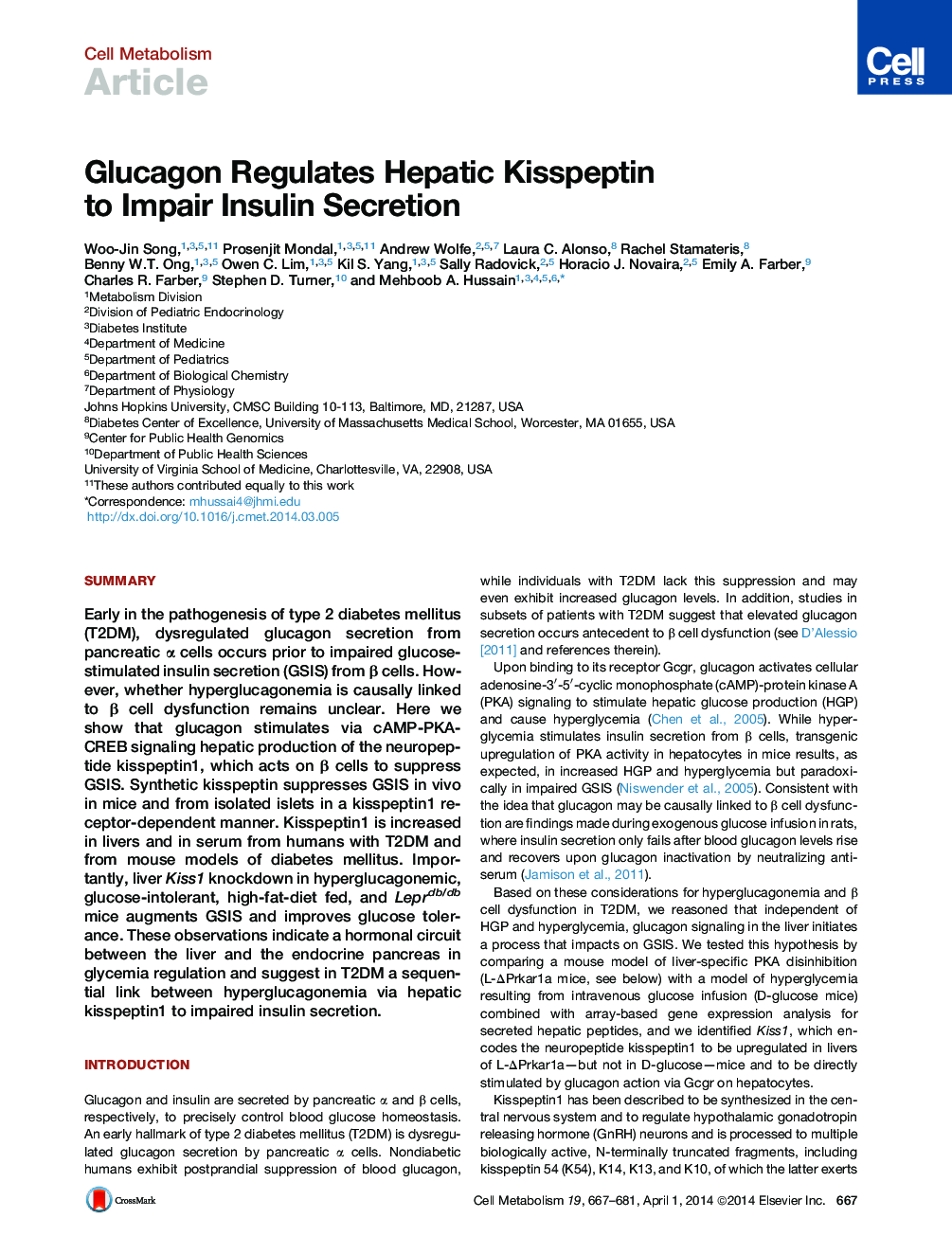| Article ID | Journal | Published Year | Pages | File Type |
|---|---|---|---|---|
| 2792668 | Cell Metabolism | 2014 | 15 Pages |
•Glucagon stimulates both hepatic kisspeptin1 production and gluconeogenesis•Kisspeptin1 suppresses glucose-stimulated insulin secretion (GSIS) from β cells•Hyperglucagonemia in diabetes impairs insulin secretion via hepatic kisspeptin1•In diabetic mice, liver Kiss1 knockdown improves GSIS and glycemia
SummaryEarly in the pathogenesis of type 2 diabetes mellitus (T2DM), dysregulated glucagon secretion from pancreatic α cells occurs prior to impaired glucose-stimulated insulin secretion (GSIS) from β cells. However, whether hyperglucagonemia is causally linked to β cell dysfunction remains unclear. Here we show that glucagon stimulates via cAMP-PKA-CREB signaling hepatic production of the neuropeptide kisspeptin1, which acts on β cells to suppress GSIS. Synthetic kisspeptin suppresses GSIS in vivo in mice and from isolated islets in a kisspeptin1 receptor-dependent manner. Kisspeptin1 is increased in livers and in serum from humans with T2DM and from mouse models of diabetes mellitus. Importantly, liver Kiss1 knockdown in hyperglucagonemic, glucose-intolerant, high-fat-diet fed, and Leprdb/db mice augments GSIS and improves glucose tolerance. These observations indicate a hormonal circuit between the liver and the endocrine pancreas in glycemia regulation and suggest in T2DM a sequential link between hyperglucagonemia via hepatic kisspeptin1 to impaired insulin secretion.
Graphical AbstractFigure optionsDownload full-size imageDownload high-quality image (126 K)Download as PowerPoint slide
